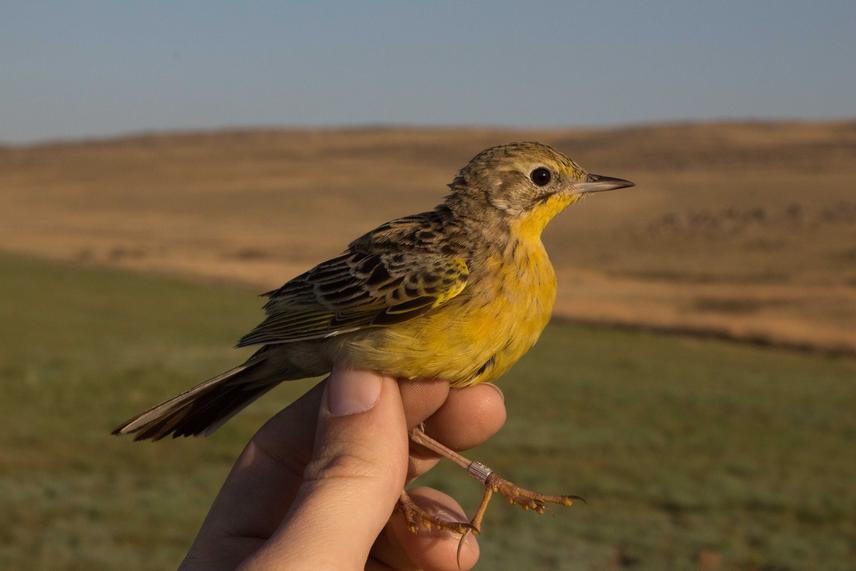Darren Pietersen
We aim to determine the current distribution of Yellow-breasted Pipits as well as determine their exact habitat requirements to ensure that current and future land use practices do not negatively impact this species.

Yellow-breasted Pipit in the hand.
Yellow-breasted Pipits (Anthus chloris) are endemic to Moist Highland Grasslands in South Africa, marginally entering Lesotho and possibly Swaziland. They are currently listed as Vulnerable on the IUCN Red List with a population that is believed to be declining. They have a restricted distribution and are known to be very sensitive to changes in management regimens, specifically intensive grazing and frequent burning. Findings from an initial survey conducted in the summer of 2013 / 2014 suggests that the population has declined since the 2012 conservation assessment, a worrying trend considering the already limited distribution and fairly small total population of this species, coupled with the increasing threat of intensive livestock agricultural practices in the species’ key breeding habitat.
This project aims to determine the current distribution and population status of this threatened species and reassess their conservation status. This study intends to cover the entire historical, known current and predicted current distribution to assess occupancy levels and habitat requirements. Intensive bird and vegetation community survey will also be undertaken to determine the exact habitat requirements of Yellow-breasted Pipits, while also investigating whether the presence of this species can be used as an indication of ecological integrity of Moist Highland Grasslands.